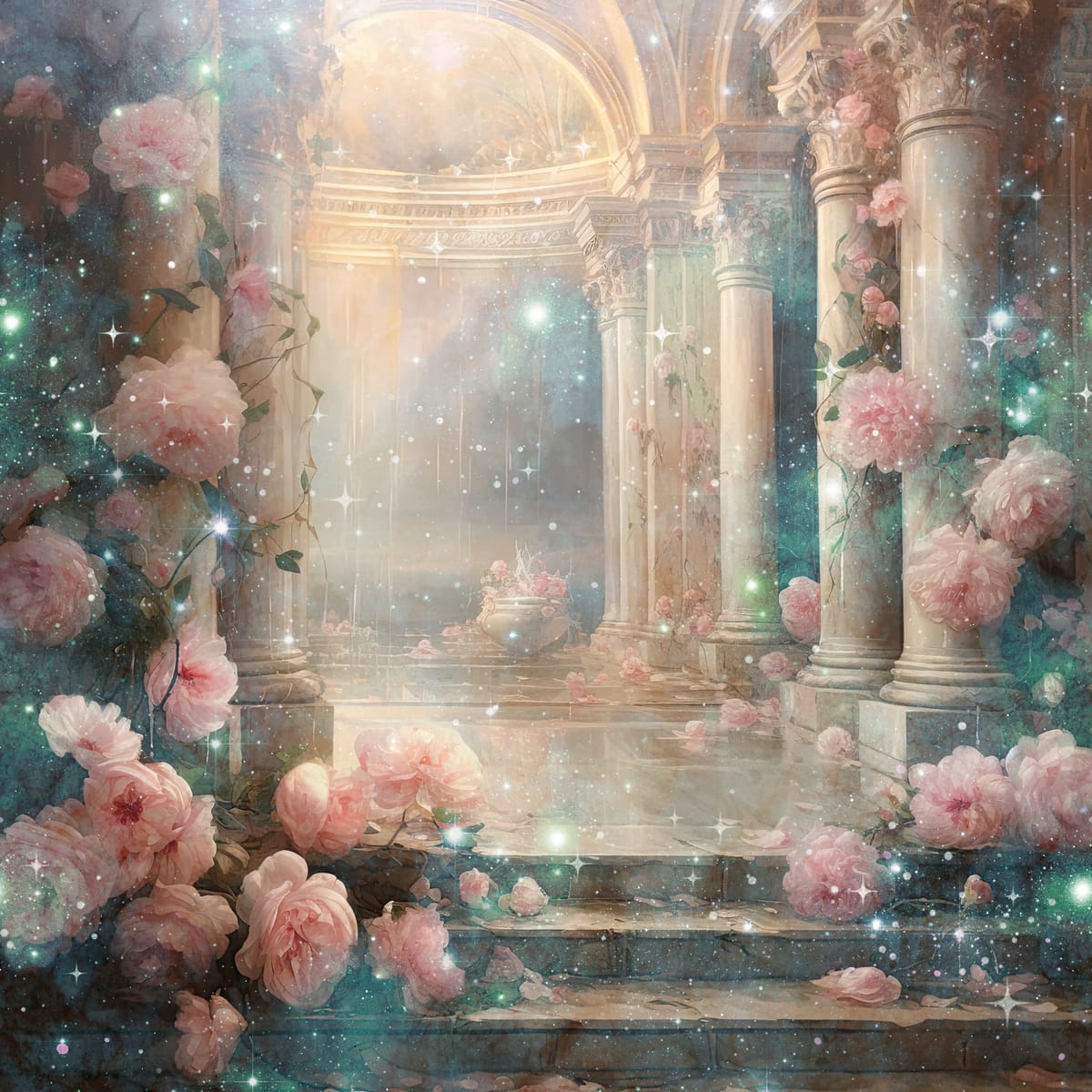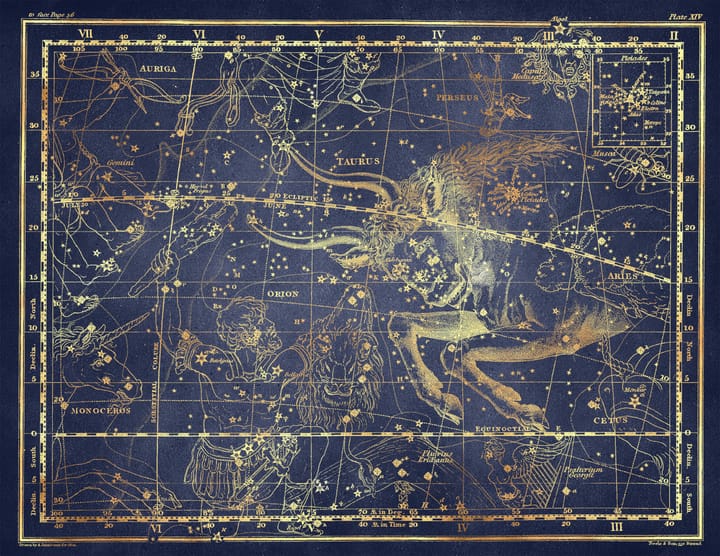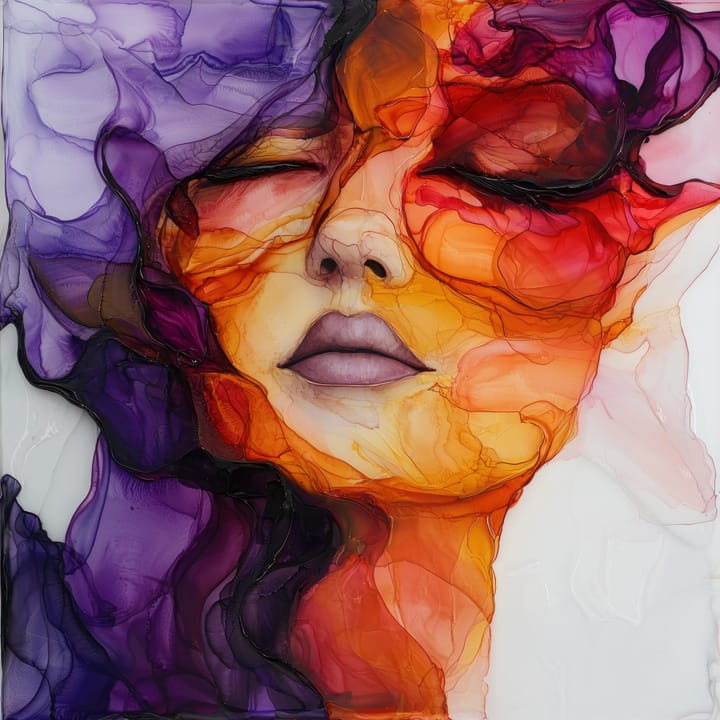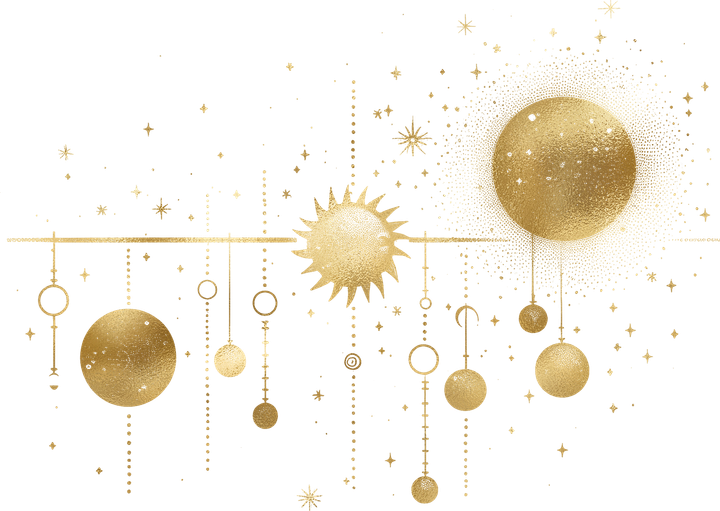The Personal Brand Archetypes: Which One Are You?

Carl Jung spent decades mapping the architecture of the human psyche, identifying patterns that repeat across cultures, centuries, individual lives. He called these patterns archetypes—universal symbols and characters that live in the collective unconscious.
The Hero. The Sage. The Rebel. The Lover. The Magician.
These aren't just literary devices or marketing constructs. They're fundamental structures of meaning-making that humans have used to understand themselves and each other since we first gathered around fires to tell stories.
Your personal brand, whether you've articulated it or not, aligns with one or more of these archetypal patterns. Not because you've chosen it strategically, but because it reflects something essential about how you move through the world, what you value, what you're fighting for.
Understanding which archetype resonates most deeply with your nature doesn't mean conforming to template. It means recognizing the pattern you're already expressing and learning to wield it with intention.
Let me show you the archetypes that appear most frequently in powerful personal brands, what makes each one magnetic, and how to identify which one feels like home.
The Provocateur: Challenger of the Status Quo
Core motivation: Disrupting broken systems, exposing uncomfortable truths, forcing necessary change
Energy: Sharp, confrontational, uncompromising
The Provocateur sees what everyone else pretends not to see and refuses to stay quiet about it. They're the voice naming the emperor's nakedness, the whistle on corrupt practices, the person asking the question everyone else is too polite or too afraid to ask.
In mythology, this is Prometheus stealing fire from the gods. In your inbox, it's the newsletter writer who makes you uncomfortable because they're telling truths you'd rather avoid.
Strengths: The Provocateur attracts people hungry for honesty, tired of sanitized corporate speak and carefully managed personas. They build devoted followings because they give voice to frustrations others feel but won't articulate. Their courage gives others permission to be brave.
Think of the way hip hop artists use beef strategically—taking strong stances, calling out what's broken, refusing to play nice. That's Provocateur energy.
Shadow side: Provocateurs can become addicted to controversy, prioritizing shock value over substance. They risk burning out from constant conflict or alienating potential allies by refusing to meet anyone halfway. The line between necessary disruption and performative rebellion is thin.
In practice: Provocateur's personal brand thrives on bold opinions, contrarian positions, willingness to name names. They don't soften their message for palatability. Their content often starts with "Let's talk about what nobody else is saying" or calling out specific industry practices.
Examples: Kasia Urbaniak challenging conventional narratives about power and gender. Anyone who's built brand on exposing industry dysfunction or advocating for radical change.
The Sage: Keeper of Wisdom
Core motivation: Understanding, teaching, illuminating truth through knowledge
Energy: Contemplative, scholarly, generous with insight
The Sage dedicates themselves to understanding—whether through research, experience, synthesis, or deep study—and sharing that understanding with others. They're not interested in surface-level trends. They want to grasp fundamental principles underlying everything.
In mythology, this is Athena dispensing wisdom. In your feed, it's Maria Popova weaving together philosophy, neuroscience, poetry into something that makes you see differently.
Strengths: The Sage builds authority through demonstrated expertise. People trust them because they've done the work—the reading, the research, the thinking. They attract audiences who value depth over speed, substance over sensation. Their personal brands age well because wisdom doesn't expire.
This is the autodidact who grew up "nose deep in a book at any given time," who reads voraciously across genres to form connections others miss.
Shadow side: Sages can become isolated in ivory towers, so focused on understanding that they lose connection with practical application. They risk overwhelming people with information or coming across as condescending. The curse of expertise is forgetting what it was like not to know.
In practice: Sage's personal brand is built on educational content, careful curation, synthesis of ideas from multiple domains. They cite sources. They show their work. Their content often explores "What we can learn from [X]" or "The deeper meaning of [Y]."
Examples: Maria Popova's The Marginalian. Anyone who's built brand on making complex ideas accessible without dumbing them down.
The Visionary: Architect of Possibility
Core motivation: Imagining and building futures that don't yet exist
Energy: Forward-thinking, optimistic, magnetic
The Visionary sees potential where others see only present reality. They're not content with how things are; they're compelled by how things could be. They paint pictures of futures vivid enough that others begin to see them too and want to help build them.
In mythology, this is the prophet or oracle. In branding, it's Seth Godin describing what's coming before it arrives, making you see around corners.
Strengths: Visionaries inspire people by offering hope and direction. They attract believers—people who want to be part of something meaningful, something bigger than themselves. Their personal brands create movements because people don't just follow their work; they follow their vision.
Shadow side: Visionaries can become unmoored from practical constraints, promising futures they can't actually deliver. They risk disappointing followers when reality doesn't match the vision. The gap between imagination and execution can become chasm.
In practice: Visionary's personal brand is future-oriented, aspirational, often utopian. They speak in terms of what's possible, what we could create together, where we're headed. Their content explores trends, emerging possibilities, the shape of what's coming.
Examples: Anyone building brand around "the future of [X]" or pioneering new categories.
The Artisan: Master of Craft
Core motivation: Pursuing excellence in specific domain, honoring craft as spiritual practice
Energy: Patient, meticulous, devoted
The Artisan dedicates themselves to mastery. Not for recognition, not for wealth, but because the craft itself demands their devotion. They believe in doing things right, in honoring materials and methods, in dignity of work done well.
In mythology, this is Hephaestus at his forge, Athena weaving. In life, it's Dita Von Teese discussing the training behind her performances—the craft that makes fantasy possible.
Strengths: Artisans build trust through demonstrated competence. Their work speaks louder than their marketing because quality is undeniable. They attract clients who value excellence over efficiency, who understand mastery takes time. Their personal brands have longevity because craft endures.
This is treating everything you do like art, believing that beauty and technique matter.
Shadow side: Artisans can become perfectionist to point of paralysis, unable to share work until it meets impossible standards. They risk being so focused on their craft that they neglect the business of making living from it. The pursuit of mastery can become excuse for avoiding visibility.
In practice: Artisan's personal brand showcases process, technique, the behind-the-scenes work that produces excellence. They educate about their craft—the tools, the methods, the patience required. Their content often demonstrates "how it's made" or "what most people get wrong about [X]."
Examples: Cora Harrington's deep expertise in lingerie as craft and art. Anyone whose brand is built on visible mastery.
The Guide: Shepherd of Transformation
Core motivation: Helping others navigate difficult passages and emerge transformed
Energy: Empathetic, experienced, trustworthy
The Guide has walked difficult path and returned to help others walk it too. They're not theoretical about transformation because they've lived it. They know the terrain, the dangers, the moments where people typically get lost or give up.
In mythology, this is Chiron the wounded healer. In branding, it's the coach whose origin story includes the struggle they now help others overcome.
Strengths: Guides build deep trust because they've demonstrated they can navigate what they're teaching. They attract people in transition—career changes, identity shifts, painful growth periods. Their personal brands feel safe, which is what people need when they're vulnerable.
Shadow side: Guides can become so identified with their wounds or their past transformation that they stop growing themselves. They risk keeping clients dependent rather than empowering them toward independence. The wounded healer can become perpetually wounded.
In practice: Guide's personal brand is built on transformation stories—their own and their clients'. They share the journey, the challenges, the breakthroughs. Their content often addresses "How to [overcome X]" or "What I learned from [difficult experience]."
Examples: Any coach or consultant whose brand is built on "I've been where you are and overcame it."
The Connector: Weaver of Networks
Core motivation: Building community, facilitating relationships, creating belonging
Energy: Generous, social, bridge-building
The Connector sees their role as bringing people together. They're not the star; they're the constellation maker, the person who introduces people who should know each other, who creates spaces for meaningful exchange, who believes collective intelligence exceeds individual brilliance.
In mythology, this is Hermes the messenger, moving between worlds and facilitating communication. In life, it's the person whose network is their net worth because they've cultivated it through genuine care.
Strengths: Connectors build powerful personal brands through reciprocity and generosity. They attract opportunities because they create value for others first. Their network becomes their net worth because they've invested in relationships authentically.
This is the advice to "make as many friends as you can in as many industries as you can. And always offer to help them when you can." Building relationships before you need them.
Shadow side: Connectors can become so focused on facilitating others' success that they neglect their own goals. They risk being taken for granted or becoming transactional in their networking. The person who knows everyone can end up truly known by no one.
In practice: Connector's personal brand is built on community, collaboration, amplifying others. They host events, create introductions, spotlight others' work. Their content often features other people's expertise.
Examples: Anyone who's built brand on curating communities, hosting salons, facilitating meaningful professional relationships.
The Maverick: Trailblazer of New Territory
Core motivation: Doing things differently, forging new paths, refusing conventional wisdom
Energy: Independent, innovative, unconventional
The Maverick doesn't just think outside the box—they question why the box exists at all. They're not interested in incremental improvement; they want to do things in ways no one's attempted before. They'd rather fail spectacularly doing it their way than succeed modestly following someone else's map.
In mythology, this is Odysseus with his cunning solutions. In branding, it's anyone who's created category of one, who's known for doing things in ways that shouldn't work but do.
Strengths: Mavericks attract people tired of conventional approaches. They build brands on innovation, creativity, courage to be first. Their willingness to experiment gives others permission to try new things. They thrive in emerging spaces where there are no established rules yet.
Think of remix culture in hip hop—taking what exists and making it completely new. That's Maverick energy.
Shadow side: Mavericks can become contrarian for its own sake, rejecting conventional wisdom even when it's wise. They risk isolation by refusing to learn from others or build on existing knowledge. Being different doesn't guarantee being better.
In practice: Maverick's personal brand emphasizes their unique approach, their unconventional methods, their refusal to follow the crowd. Their content often challenges industry standards or demonstrates "Why everyone's doing [X] wrong and here's my completely different approach."
Examples: Anyone who's built category of one through sheer refusal to do things the expected way.
Finding Your Archetype (And Working With It)
Most people resonate primarily with one or two archetypes, with elements of others appearing in specific contexts.
You might be primarily Sage but express Provocateur energy when discussing industry dysfunction. You might be Artisan who occasionally channels Visionary when describing where your craft is headed.
The question isn't which archetype you should be. The question is which one you already are, whether you've named it or not.
To identify your primary archetype, ask yourself:
What do people consistently come to you for? Knowledge (Sage), challenge (Provocateur), inspiration (Visionary), skill (Artisan), guidance (Guide), connections (Connector), or innovation (Maverick)?
What energizes you most in your work? Teaching, disrupting, building, mastering, transforming, connecting, or pioneering?
What would you do even if no one paid you for it? That's usually where your archetypal truth lives.
Which archetype's shadow side sounds most like your worst tendencies? We're often most vulnerable to pitfalls of our primary archetype.
Once you've identified your archetype, the work becomes:
Lean into it fully. Don't dilute your natural energy by trying to be all things to all people. If you're Provocateur, be provocative. If you're Sage, embrace depth. If you're Artisan, showcase craft. Let your archetype shape your positioning rather than fighting against it.
Study others who embody it. Look at personal brands that resonate with your archetype. What patterns do you notice? How do they communicate? What gives their work power? You're not copying—you're learning the language of your archetypal family.
Know your shadow and work with it. Every archetype has pitfalls. The Sage can become insufferable. The Provocateur can burn bridges. The Artisan can never ship. Awareness doesn't eliminate shadow, but it helps you catch yourself when you're slipping into it.
Honor your secondary archetypes. You're not one-dimensional. Guide might also be Artisan. Visionary might have strong Connector tendencies. These combinations create your unique flavor within your primary archetype.
Let your archetype evolve. You might spend ten years as Maverick, then mature into Sage. You might start as Guide and develop Provocateur energy. Archetypes aren't prison cells—they're home bases you operate from, and home can change as you grow.
The Archetypal Truth
Your brand resonates not because you've manufactured something clever, but because you're expressing archetypal pattern that humans have recognized and responded to for millennia. When you align with your natural archetype, you tap into something larger than your individual story. You become version of something timeless.
This is why personal brands that feel authentic generate such powerful responses. They're not performances—they're expressions of archetypal truth channeled through individual personality.
The Provocateur challenging status quo activates something in us that recognizes need for disruption. The Sage offering wisdom touches our hunger for understanding. The Guide who's walked the path before us makes transformation feel possible.
You don't need to manufacture archetype. You need to recognize which one you already embody and give yourself permission to express it fully.
The most magnetic personal brands aren't trying to be something they're not. They're being exactly what they are with such clarity and commitment that it becomes undeniable.
Which archetype are you?
Stop fighting it. Stop trying to be more palatable or more like someone else. Find your archetypal home and occupy it completely.
That's where your power lives.
Want to go deeper into your archetypal brand? Join my mailing list for exercises, frameworks, and insights that help you identify your natural archetype and build personal brand that feels like coming home to yourself.




